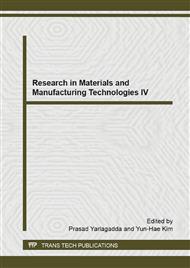p.1074
p.1079
p.1083
p.1088
p.1096
p.1100
p.1104
p.1108
p.1118
The Research on the Axis-Symmetric Development and Verification for the Positive Scheme Numerical Method
Abstract:
The mathematic express of positive scheme axis-symmetric Euler equations is derived. With the numerical calculation of oblique shocks regular reflection problem, the validity of the positive scheme method and the self-programmed codes is verified. The positive scheme method is developed to solve the axis-symmetric Euler equations and then used to simulate the supersonic axis-symmetric flow over missile afterbody. The results show that: the numerical simulation match well with the experimental results and the numerical results obtained by the already existing high accuracy scheme method, the correctness of the development of positive scheme method is verified.
Info:
Periodical:
Pages:
1096-1099
Citation:
Online since:
December 2014
Authors:
Price:
Сopyright:
© 2015 Trans Tech Publications Ltd. All Rights Reserved
Share:
Citation:


